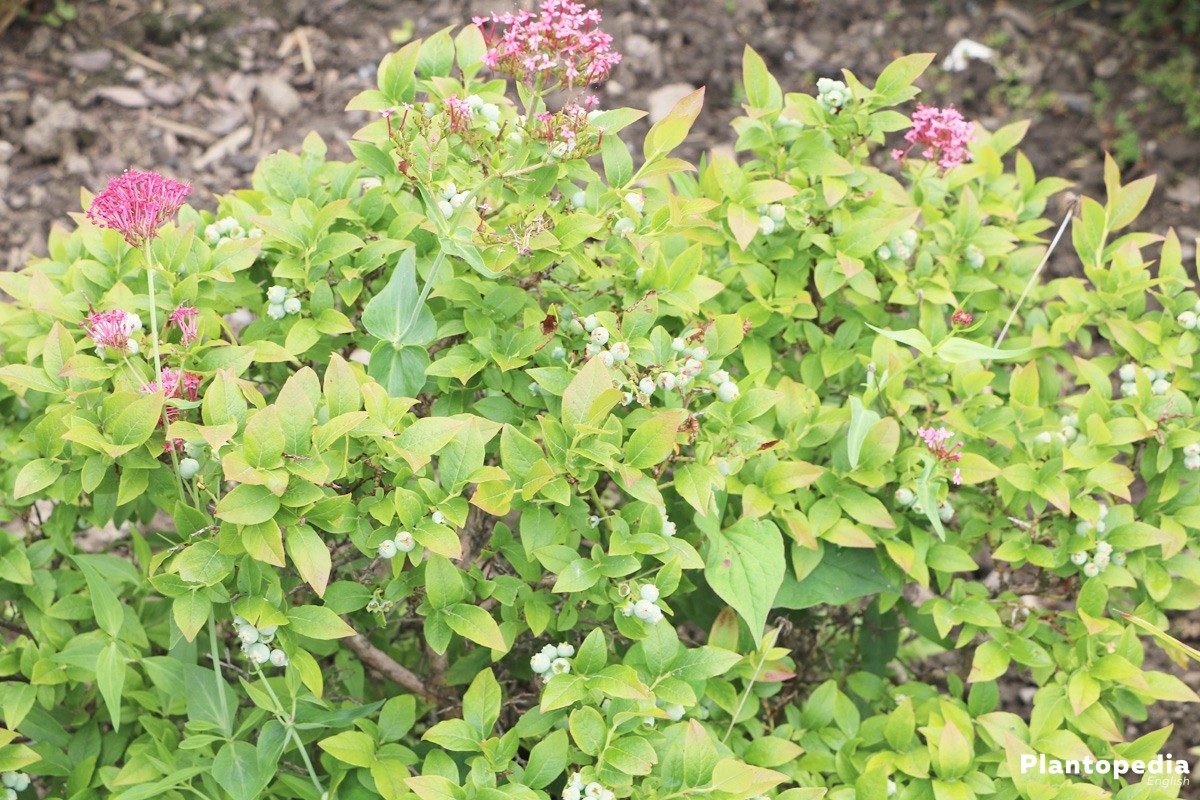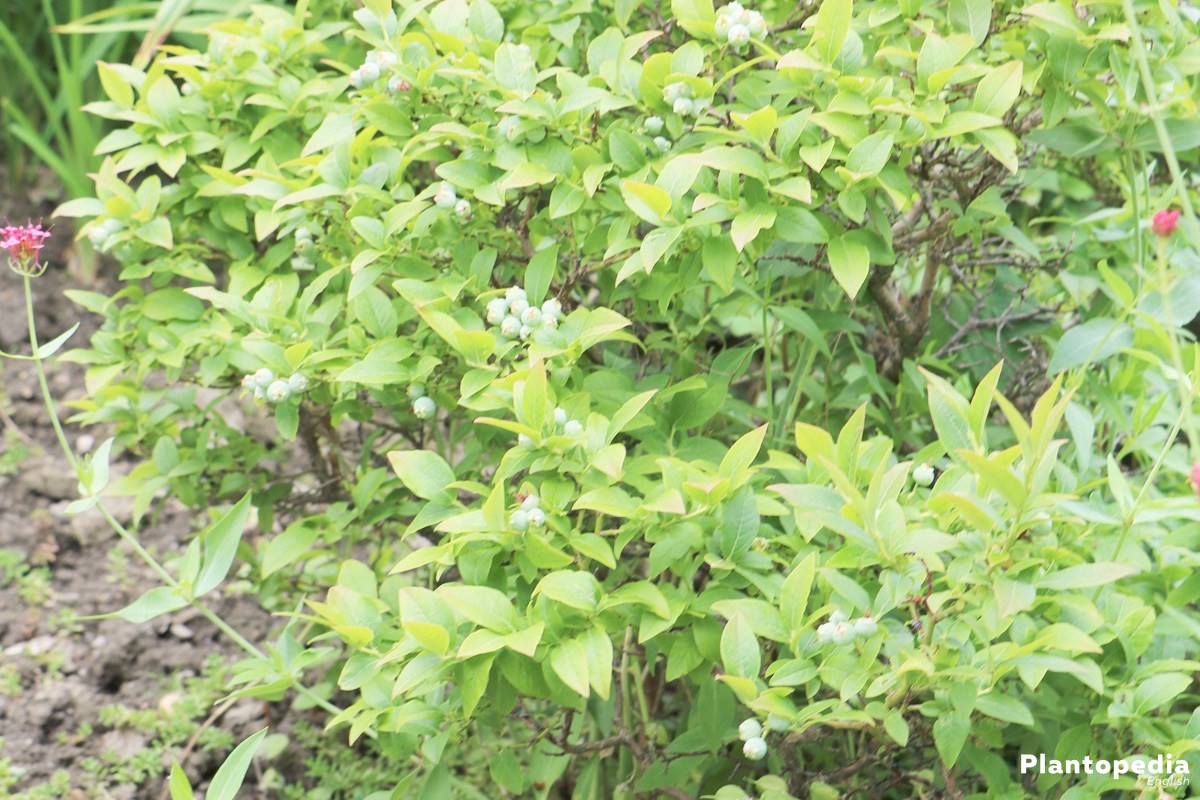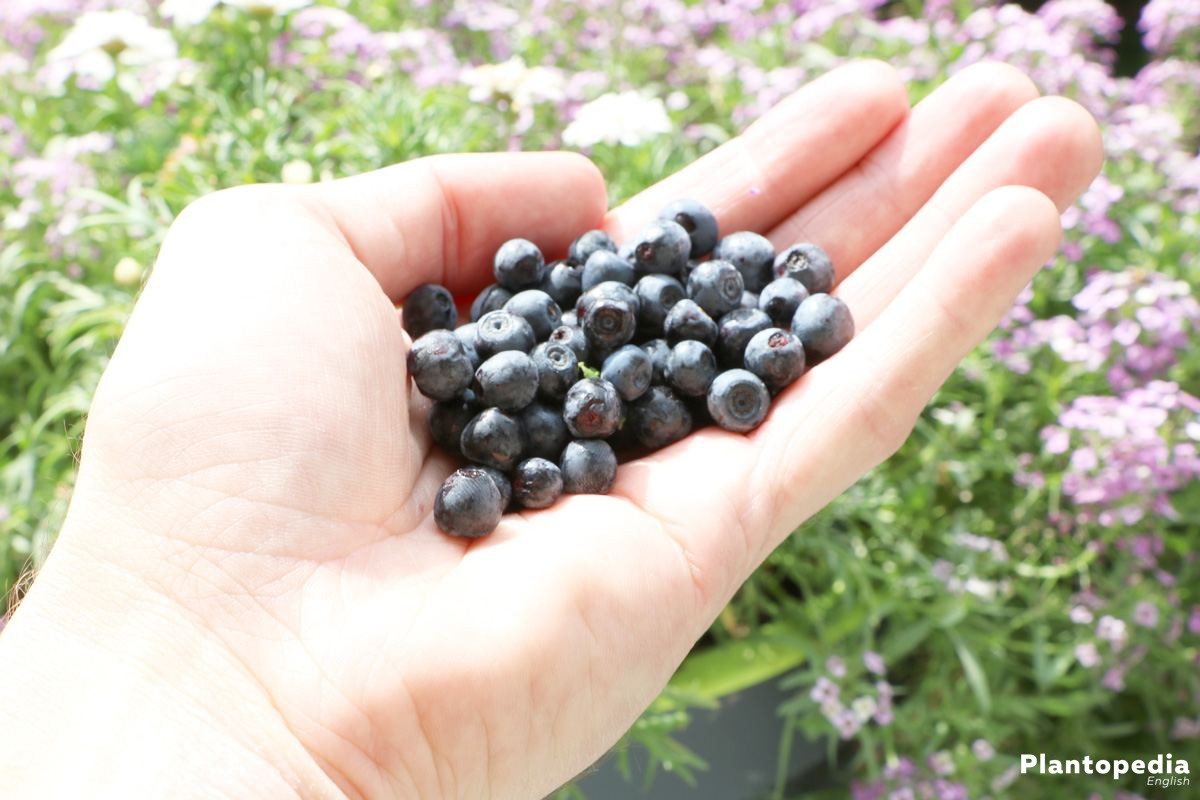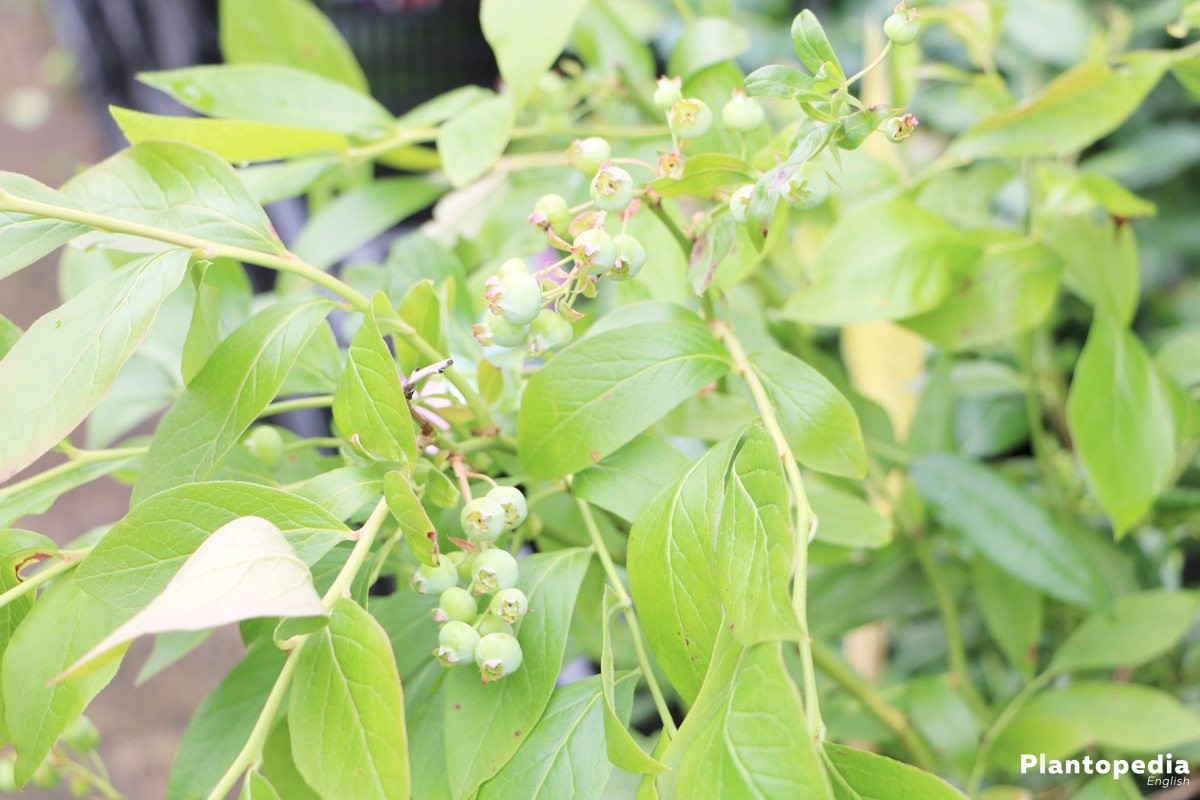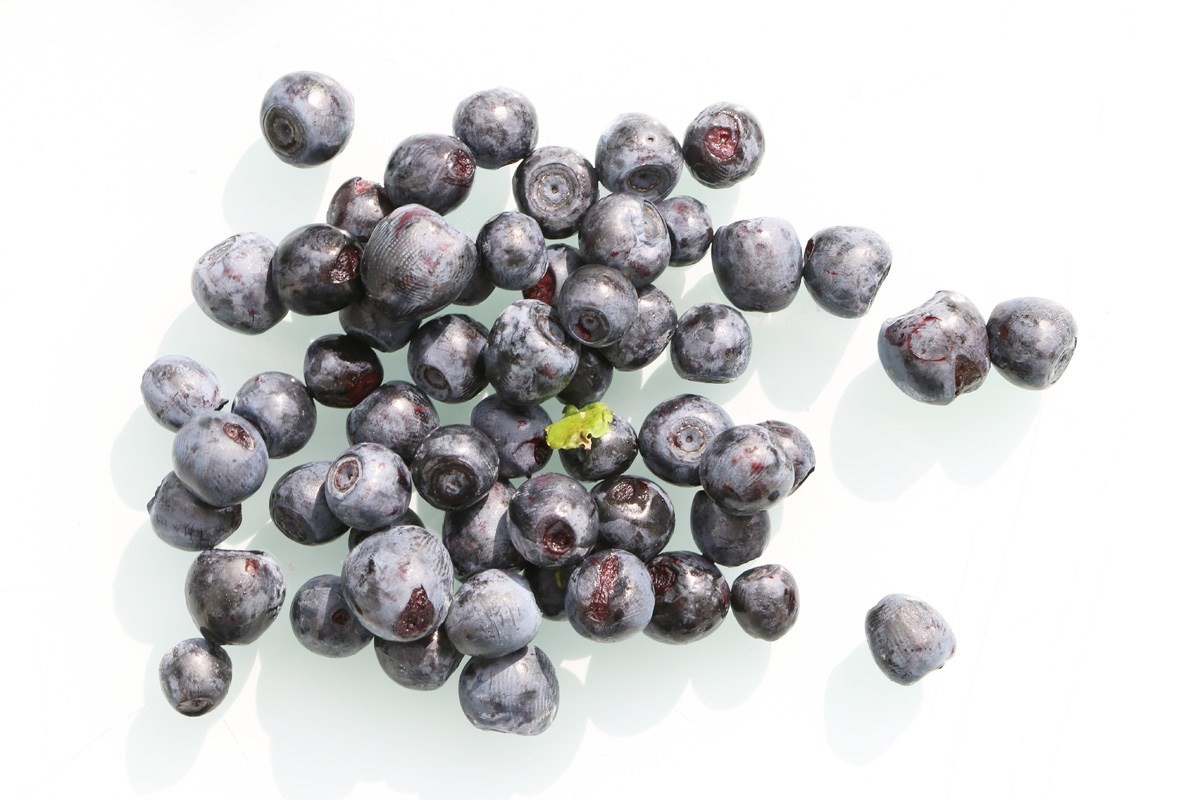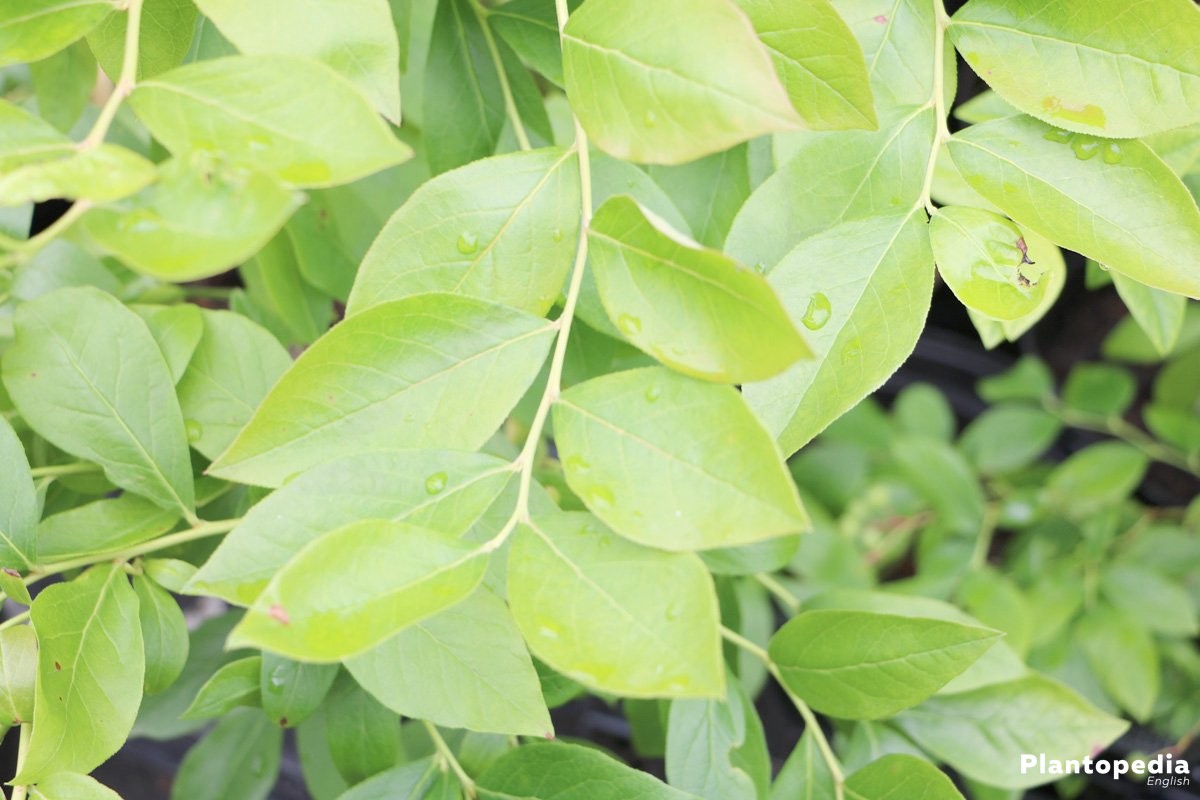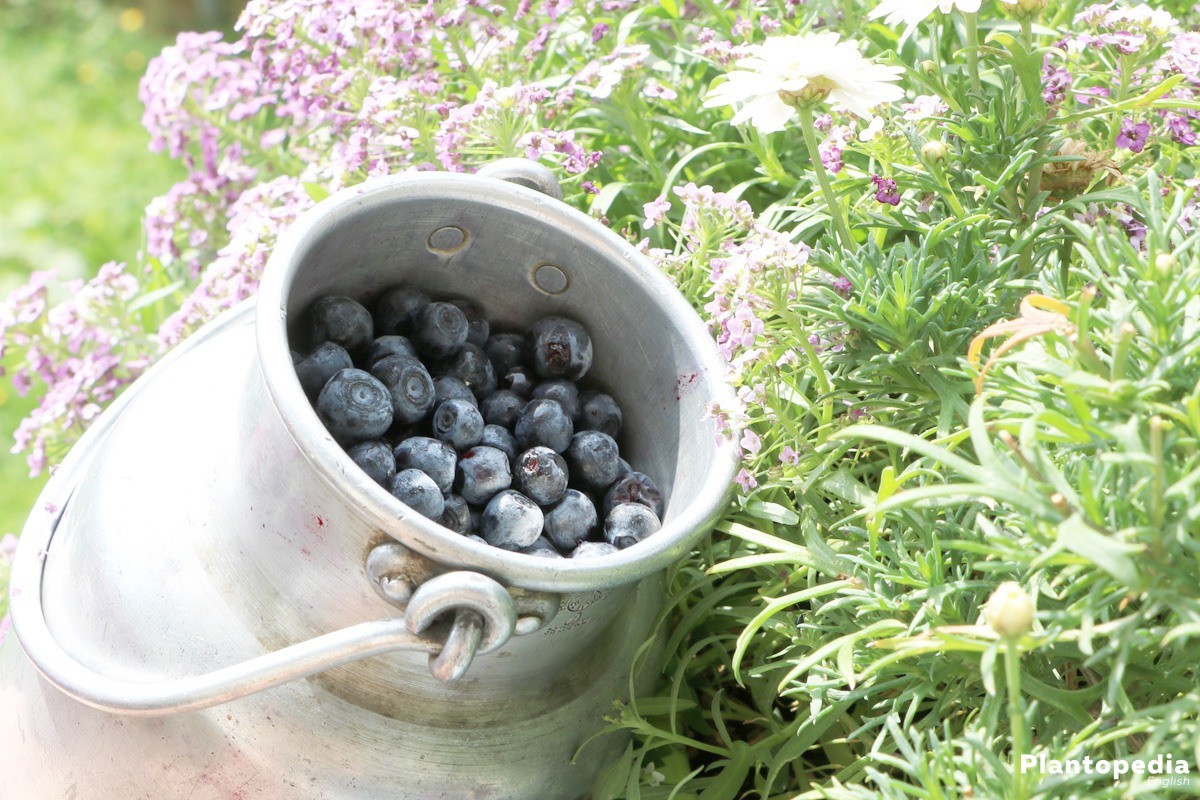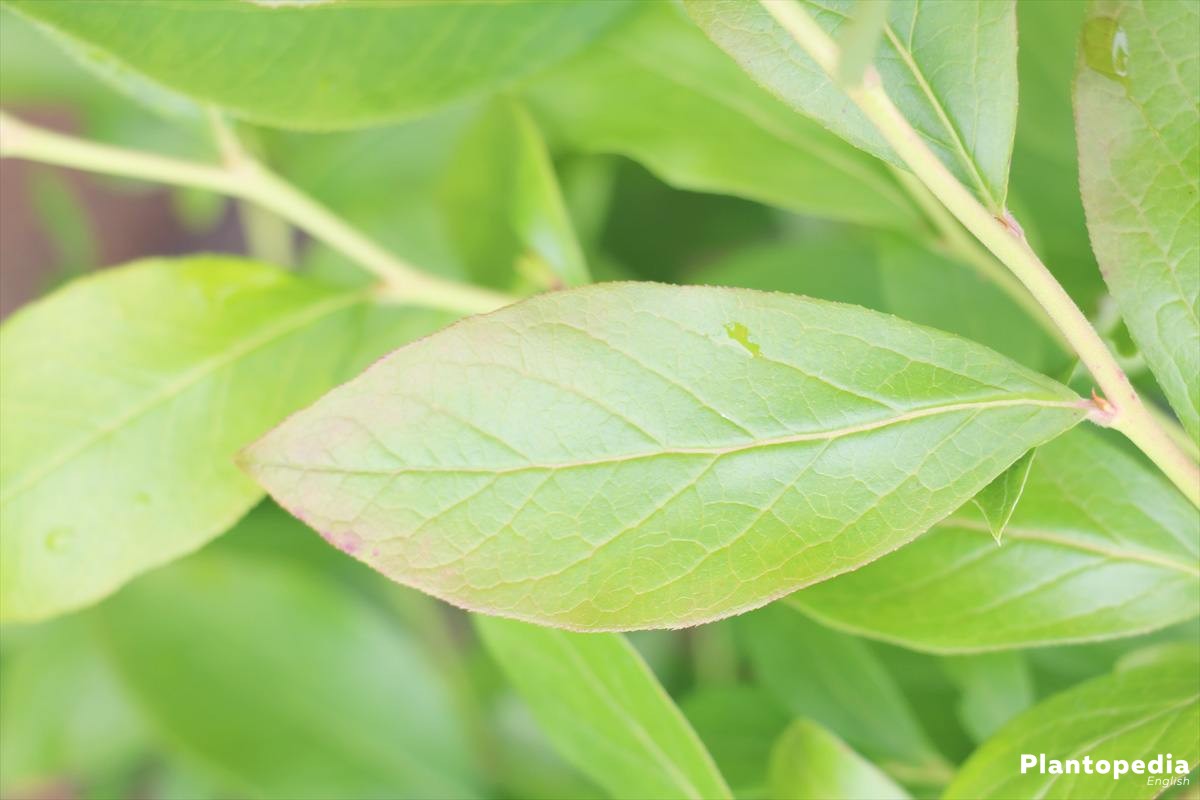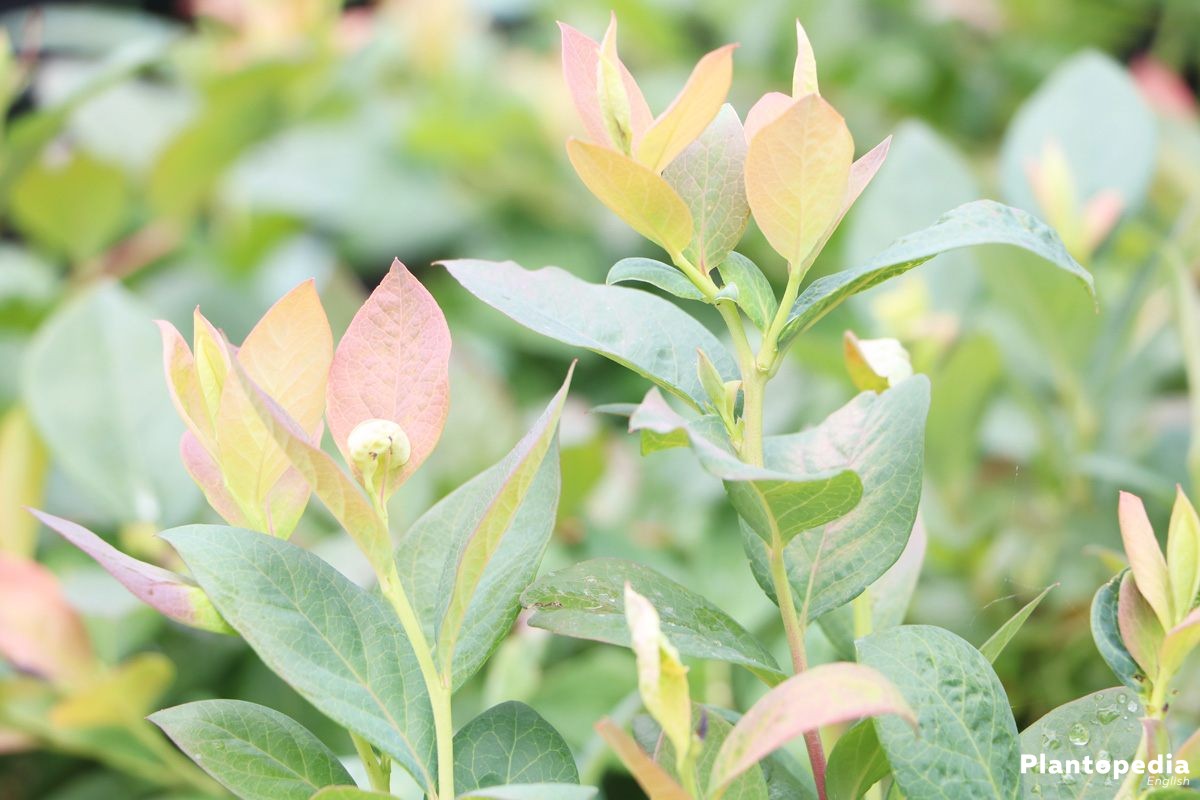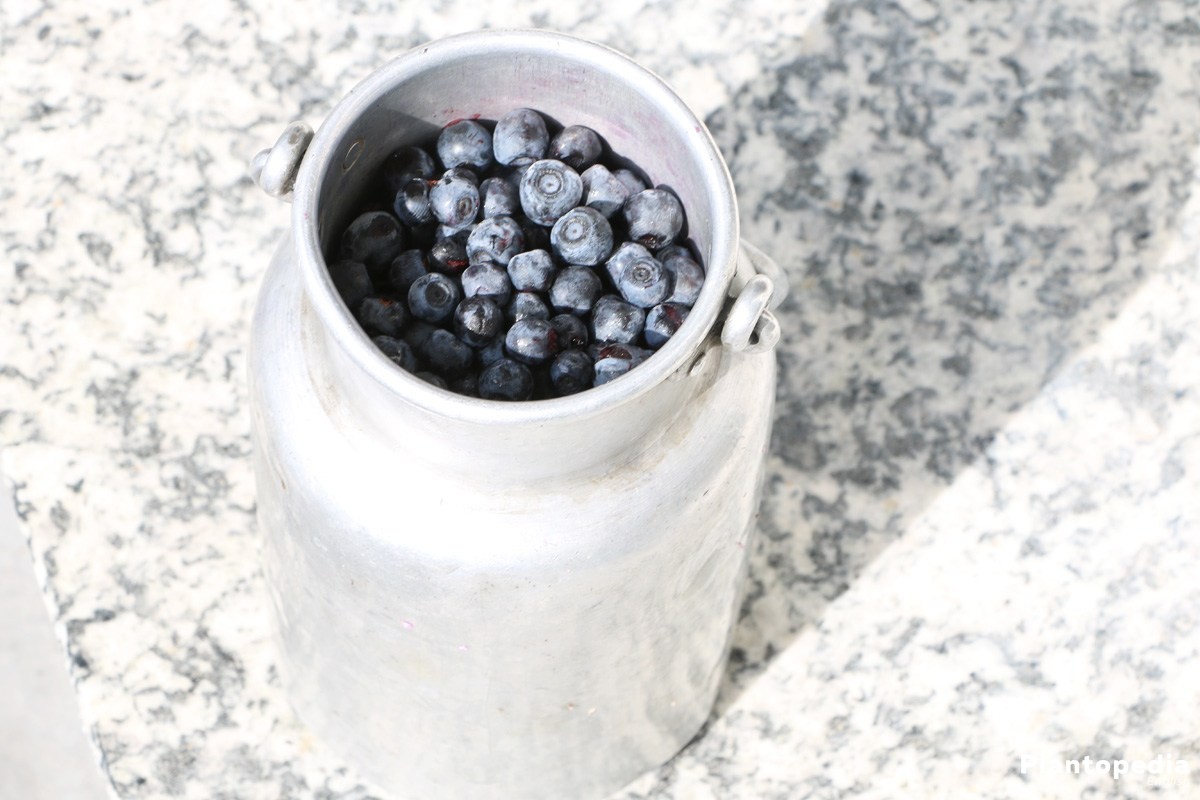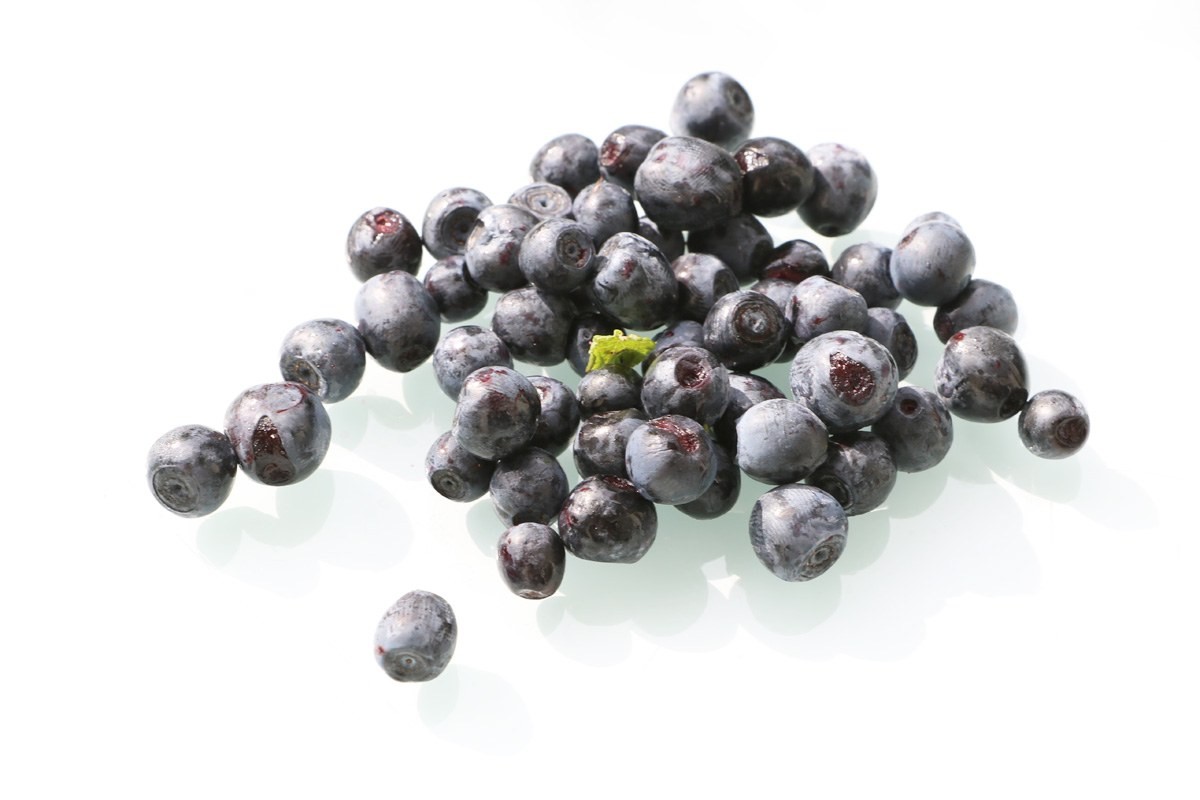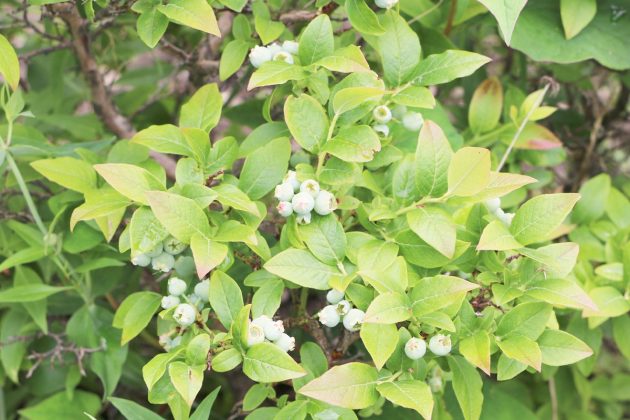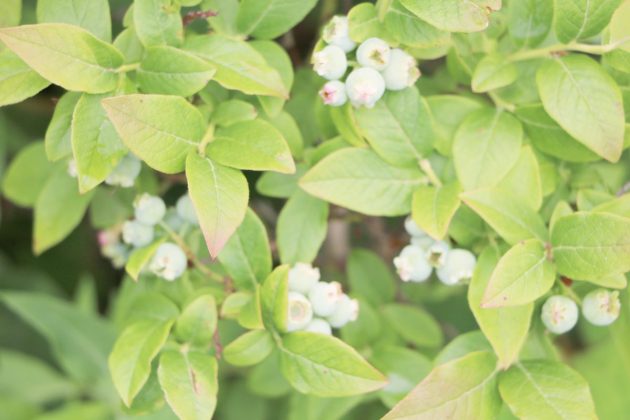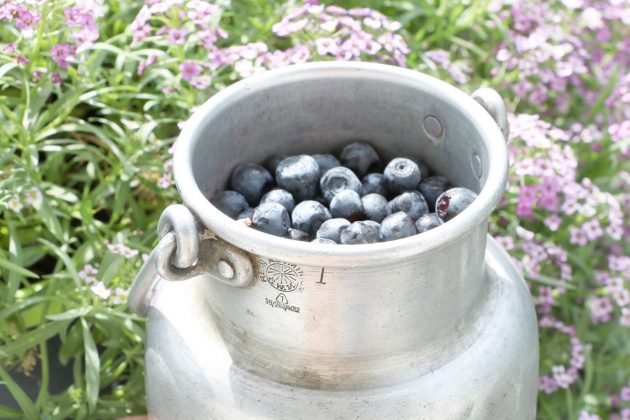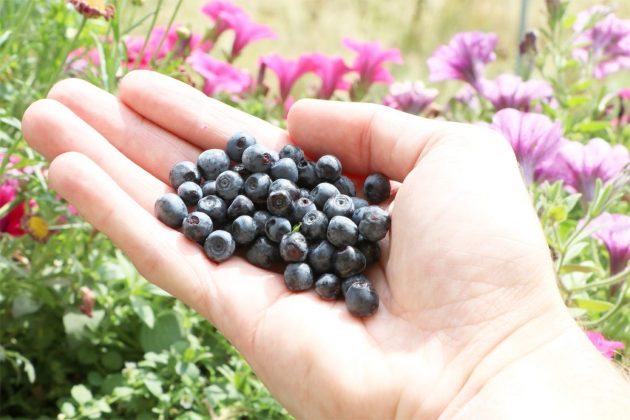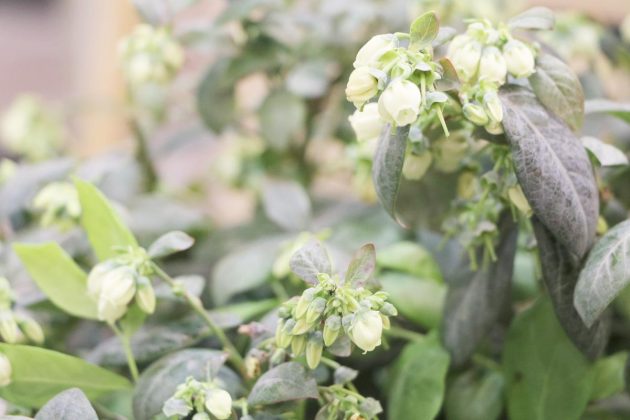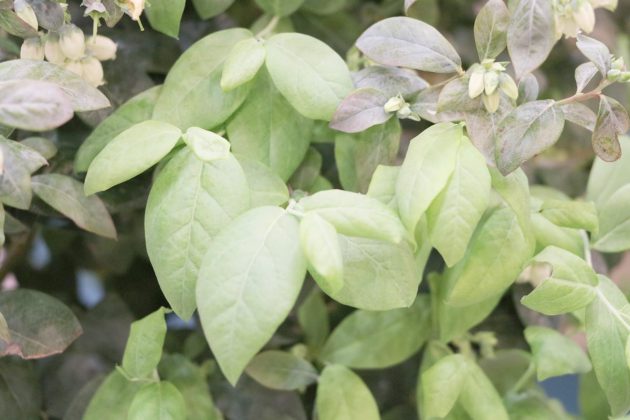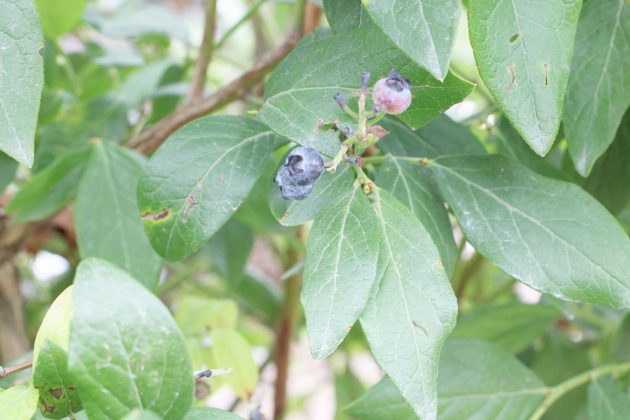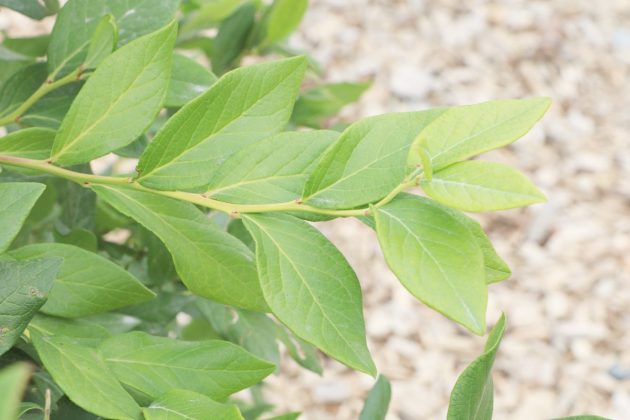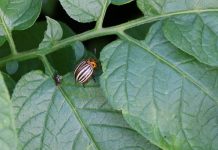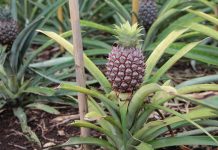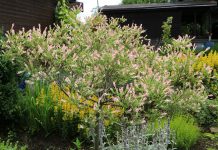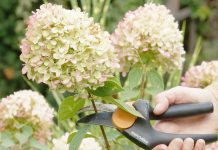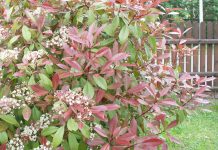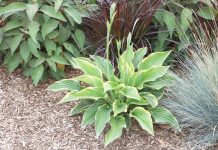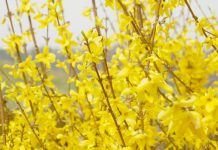Blueberries can even find a place in small gardens. Throughout several weeks a year, they develop a variety of aromatic and healthy fruits. Even the bell-like blossom and the autumn leaves are very decorative. In the garden mainly varieties of highbush blueberries are grown, rarely wild blueberries. For the significantly smaller forest blueberries the conditions in the home garden are usually not ideal.
Plant Profile
Contents
- Genus: Blueberries
- Family: Heather plants (Vaccinium)
- Origin: USA and Canada
- Trivial names: Blueberry, Cranberry, huckleberry
- Growth: Perennial, upright, strongly branched, deciduous subshrubs
- Habit: Varies from species to species
- Plant height: Depending on the species between 100 and 200 cm
- Blossom: White, paniculate flower head
- Blooming period: Main blooming period in the first two weeks in May
- Fruit: Violet-black, pruinose, Pulp pale
- Harvest: July to September
Commercial, highbush blueberries from the family of heather plants descend from the American blueberry. They are a subshrub and reach a height up to 200 cm. From May the blossoms and from July to September the delicious fruits appear.
Care
In comparison with the domestic forest blueberry, the northern highbush blueberry develops more and bigger fruits, which ripen timely staggered. The flavour of many species is not inferior to their wildly growing relatives. The typical blue mouth after the consumption of forest blueberries fails to appear with the cultivars.
Planting in the garden
Blueberries are mainly planted in the garden. Some species are also very suitable for a tub planting. Wild blueberries find optimal conditions in the garden only in rare cases, that´s why almost exclusively cultivars are grown. Ideally, at purchase you decide upon a 2-3 years container plants which already have several side shoots and are well-rooted. Planting is possible in early spring and autumn.
Even if blueberries are undemanding, they need regular care. Firstly, an appropriate location has to be determined. In contrast to wild blueberries, which grow in semi-shady areas, cultivated species prefer a wind-protected, fully sunny but not too hot location. Having found the right location, the soil has to be prepared.
Preparing the soil
The blueberries have very high requirements concerning the soil because these plants belong to the so-called bog plants. Accordingly the pH-value should be low, therefore acid and between 4 and 4, 5. Moreover, it should be evenly wet, humus-rich, lime-free, well-aerated as well as sandy to marshy.
A high percentage of humus keeps the soil wet, which the blueberry benefits from. In contrast, waterlogged and condensed soils have to be avoided. If the soil is not acid enough, it is recommendable to replace it completely. For this purpose, you can dig a 40-50 cm deep and 100 cm wide hole and fill it with peat or a special rhododendron or azalea substrate. This substrate has exactly the features that the blueberry requires.
If you want to forgo peat for ecological reasons, you can acidify the soil with the addition of bark humus, sawdust, leaf mould, bark mould as well as fir and spruce needle litter.
Planting
Most species of the highbush blueberry are self-fertile, this means that also single plants bear fruits. However, it makes sense to plant at least two different species because the fruit yield is significantly higher. If you chose two species with different ripening seasons, you can enjoy the delicious fruits from July throughout to September. Blueberries can be planted in different ways.
- one possibility is the plating in a cement barrel with drainage holes
- the barrel is put together with the plant in the plant hole
- in this way the lime input from neighbouring beds can be avoided
- another possibility is the creation of a so-called raised bed
- subsequently blueberries are planted on it
- the raised bed respectively the wall should obviously consist of acid substrate
- also this kind of planting can avoid a lime input
- it protects from waterlogging, surplus water runs away from the root bales
- the third possibility is a completely normal planting in the bed
- the plant hole should be wider than deep because blueberries are shallow-rooters
- a depth of 50 cm and a width of 100 cm are sufficient
- you fill the plant pit with an acid substrate mixture
- if the soil is very limy, the lining of the plant hole with foil is suitable
- for several specimen plant distances of 150 – 250 are recommendable
- this distances also apply for an inter-row cultivation
In order to prevent an excessive growth of weeds, it is recommendable to cover the root area after planting with rotten plant material such as wood chips, fir litter, fir cutting or bark mulch. Such a cover is also a good winter protection.
You should forgo chemical herbicides because the blueberry roots are particularly sensitive to any kind of herbicides. Companion plants with similar requirements such as cranberries, grape hyacinths, small rhododendrons, azaleas, heathers or the Japanese iris make the blueberry look particularly adorningly.
Planting in the bucket
A good alternative to planting in the garden is planting in a bucket such as on a balcony facing the sun or on a terrace. Keeping them in a bucket is particularly beneficial for species that react sensitively to windy locations. Moreover, rather small species should be chosen such as “Sunshine Blue” or “Northsky”. The advantage of keeping the plants in a bucket is that the acid content of the soil can be controlled better than in a bed.
The respective plant vessel should be wide enough and have sufficient drainage holes. Recommendable is a capacity of at least 50 litres. Concerning the substrate, the same conditions apply as for planting in the garden.
The bucket is filled with acid and loose substrate up to few centimetres under the rim of the pot and the plant can be put and finally it is watered abundantly. The bucket plants should hibernate in a frost-free but cold winter habitat
Replanting old blueberries
Highbush blueberries can remain in the same location for up to 30 years with an appropriate fertilisation and care. However, if it should be necessary to replant the blueberry, it becomes more difficult the older the plant is. The best time is after harvest in late summer or autumn if no extensive dry period can be expected any more. For this purpose, you ideally chose a rainy day.
The replanting in autumn has the advantage that the plants root better in the new location and therefore they possibly bear fruits in the following spring. Obviously, it can be replanted in early spring before the beginning of the shoot. But in this case the plants usually bear fruits only in the upcoming year.
Before replanting, the soil in the new location has to be prepared appropriately and lined with foil, if required. The plant hole, which should be significantly bigger than for a newplanting, is dug out. Digging out the blueberry, you have to consider digging out the root area with its flat-spreading roots in a big radius in order to damage or injure it as least as possible.
The plant pit is filled with appropriate substrate and the blueberry is planted. For bigger plants pruning before planting is recommendable to make the growth easier for the plant. At regular intervals, the blueberries must also be repotted in vessels just like in the garden and the size of the pot must be adjusted to the size of the shrubs. In too small plant vessels deficiency symptoms such as stunted growth can quickly occur.
After the blueberries were planted, you have to focus on the additional care. Only if location, conditions of the soil and the subsequent care meet the requirements of this plant, they can develop well and produce a high yield of fruits.
Watering
- blueberries depend on an even moisture of the soil
- immediately after planting, they are watered abundantly
- at the latest with the beginning of the flowering period, water regularly and evenly
- drought has absolutely to be avoided
- for watering use only rainwater or lime-deficient water
- protect the root area from drying up with a cover of organic material
- that can be fir litter, sawdust, leaves or bark mulch
Accordingly, bucket plants must be watered more frequently, because the substrate dries up much more quickly and more extensively in the pot than in the garden. Especially during the fruit setting and the harvest, the plants should be controlled regularly and watered appropriately.
Fertilisation
The nutrient supply should be carried out very economically because these plants are extremely sensitive to salt. One fertilisation each early spring and another each autumn are recommended. In this process, the respective fertiliser should always be given in combination with a lot of irrigation water and the acid pH-value of the soil should not be influenced significantly.
All kinds of alkaline fertilisers that lime the soil are absolutely not advised. In contrast to this, special fertilisers free of chloride and lime, which additionally provide the appropriate acid content, are suitable.
If you attach importance to natural fertiliser, you can fertilise your berries with chaff of coniferous woods, cedar wood or cypresses cutting, composted spruce or fir needle, composted pieces of bark or bark mulch.
These materials can easily be used up several times a year and they can easily be put in the soil. Heavily concentrated artificial fertilisers are not recommendable. However, if you want to apply them, you should dispense the amount of fertiliser in weekly doses as small as possible in order to avoid an overfertilisation.
Pruning
- an important part of care is the pruning of the blueberry
- in the first years any pruning measures can be foregone
- only after about 4-5 years pruning is useful
- it should stimulate the new budding and optimize the harvest in the following year
- the young shoots mostly bear more fruits than old ones, which is why pruning is useful
- the best time for this is in autumn after harvest
- then the plants lost their leaves and are at a certain rest
- the pruning should be carried out during a frost-free day
- cut out gnarled, too closely standing, dried up and old shoots for the rejuvenation
- preferably mark the shoots that hardly have any fruits with a small ribbon
- in this way you can recognize them at pruning in autumn and remove them
- the removal of rods near the ground can counteract a fungal infestation
- but branches near the ground can also be used for the production of layers
- you lower them to the ground, you weight them in the centre and cover them with soil
- as soon as roots have developed, the layers can be cut off and planted
Harvest time
The harvest time of blueberries in the garden begins in the middle of July and ends approximately in September. In contrast to wild blueberries that ripens at the same time, the harvest of highbush blueberries extends into several weeks. The fruits continuously after-ripen in stages. In general, blueberries should only be harvested if they are deep blue because only then they have acquired their complete aroma. The longer they remain in the shrub, the sweeter they taste.
Fruits that are harvested in unripe condition will not after-ripen any more. In the year of the planting, the yield is not very high yet. The highest yield can mostly be achieved after about 6 years. The so-called blueberry comb, which is often used for the harvest of forest blueberries, is only suitable for highbush blueberries to a limited extent because due to the delayed ripeness the cultivated species mostly bear unripe and completely ripe fruits next to each other. Therefore, the harvest by hand provides the best quality.
Varieties
Blueberry “Blautropf”
The particular thing of this fertile species is the 5-8 mm long, teardrop-shaped fruits. The ripe from the end of June to the beginning of the frost period. The taste is refreshing, sweet and sour. It grows up to a height of 60 cm and a width of 40 cm.
Blueberry “Duke”
The first fruits of this species are ready to harvest in the beginning of July. It frequently produces high yields. The mild and sweet-tasting fruits are big and solid. The growth height is about 150 cm.
Blueberry ‘Earlyblue’
“Earlyblue” is a vigorous, early ripening species whose fruits are ready to harvest from beginning of July. The fruits are big and have a sweetish flavour. The reach a height of up to 200 cm.
Blueberry ‘Ozark Blue’
‘Ozark Blue’ develops huge fruits with a pale fruit pulp. Due to its ripening period in the end of August it can be combined well with earlier ripening species. The extra big fruits have an aromatic sweet flavour. This blueberry grows up to 200 cm.
Blueberry ‘Sunshine Blue’
This shrub with a compact habit is ideally suitable to keep it in a bucket. It grows up to maximum 70 cm and its light blue, medium-sized and sweet fruits ripen from July to August.
Blueberry ‘Northsky’
This blueberry is also suitable to keep it in a bucket. It has a compact, very bushy habit with growth heights up to 80 cm. The sweet, blue fruits ripen from the beginning of August to the beginning of September.


